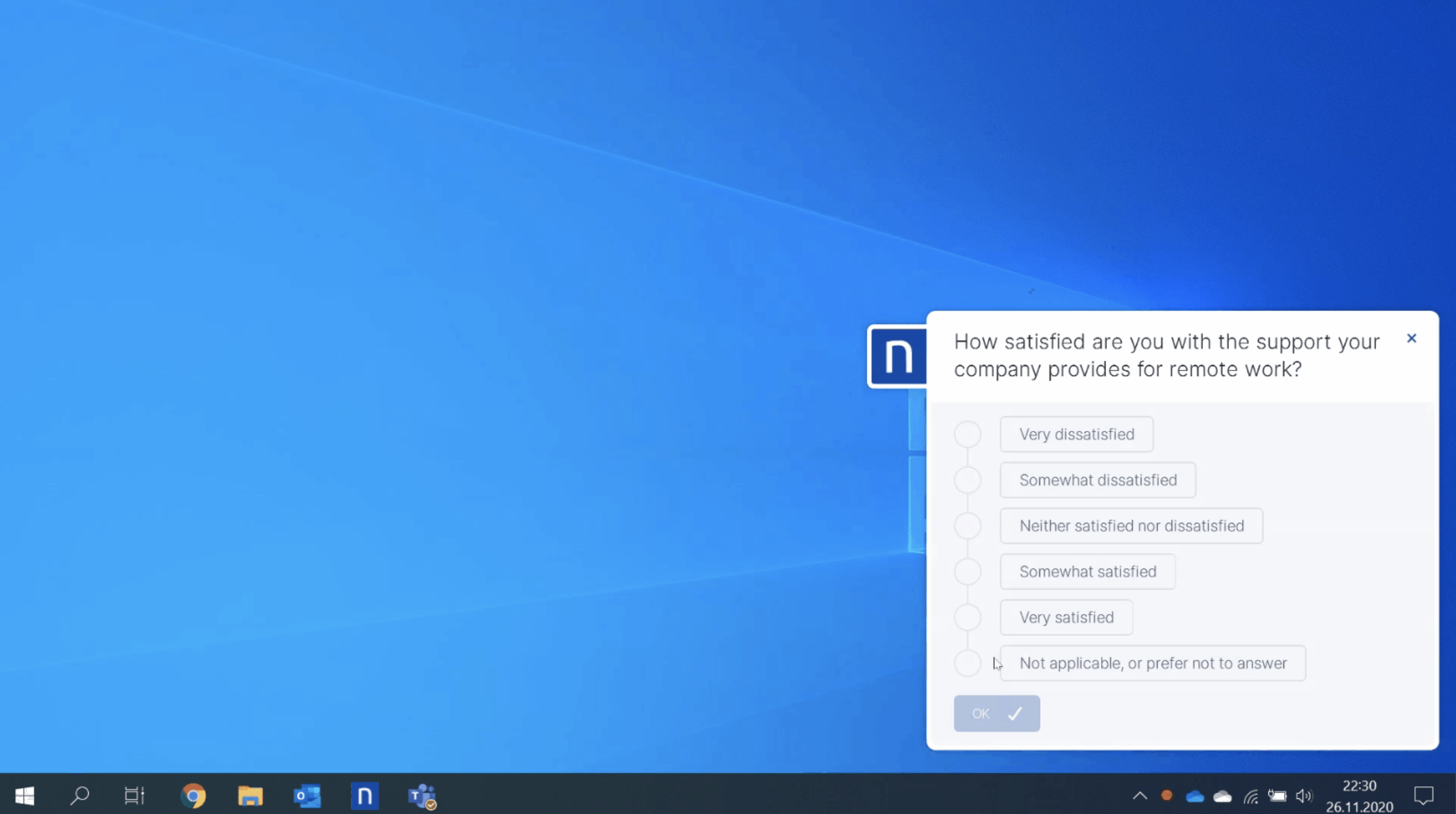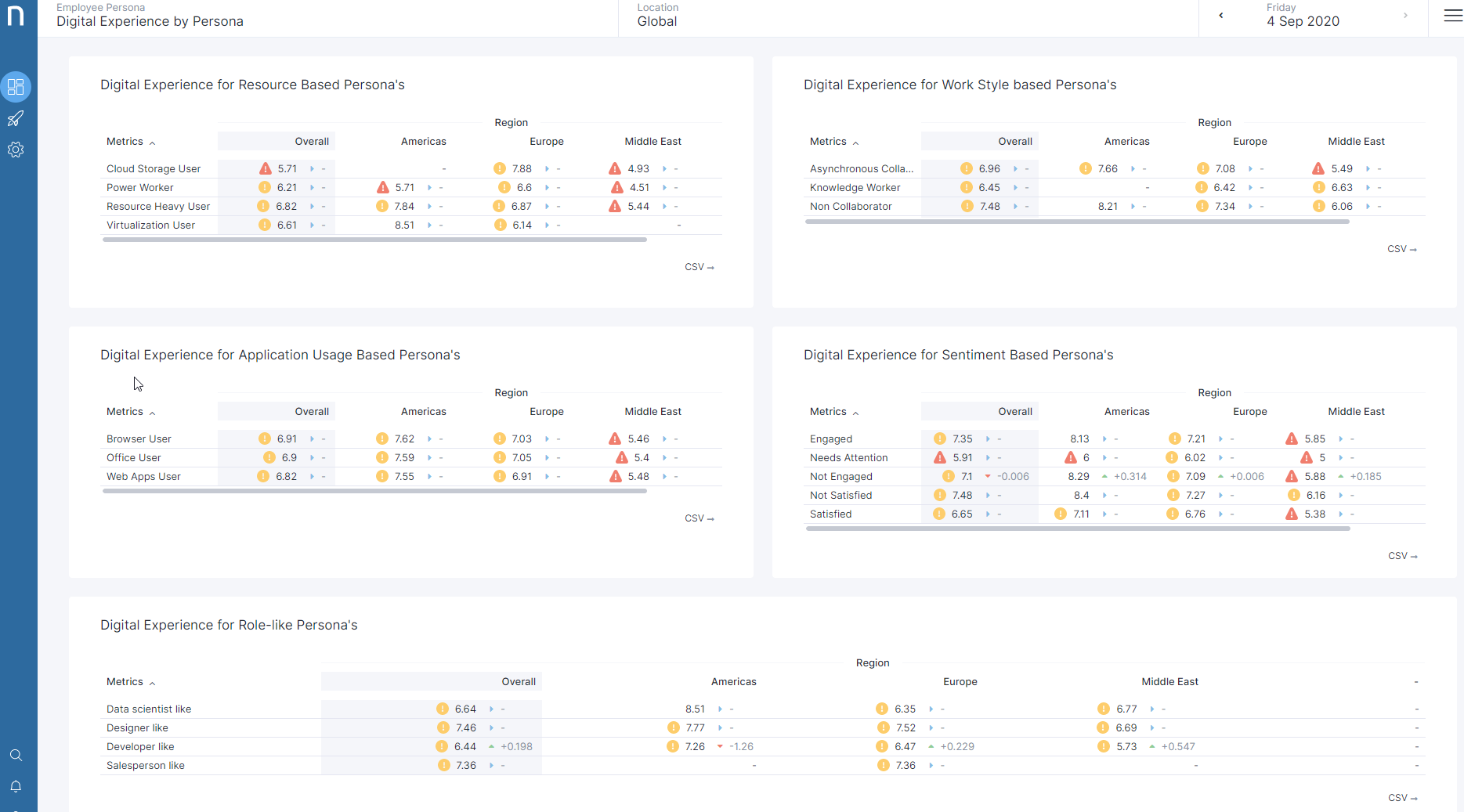Let’s face it: when it comes to managing a work-from-home setup, IT has a lot of problems they don’t know how to solve. It’s not for lack of effort – there just don’t seem to be many practical solutions out there that can alleviate their new remote work-induced headaches.
It was tough enough getting everyone up and running in home offices. Now, IT is all but drowning in tickets (a majority of tech leaders have reported ticketing increases up to 50%). Remote workers are isolated, finicky, and understandably more sensitive to digital disruptions now. If their main apps crash, their networks slow, their VPN kicks them offline – then they’re left anchorless and unproductive.
Work life – 1
Digital worker – 0
On top of all that, IT has problems with visibility that they don’t even recognize. Employees may be at home, rather than at the IT desk with pitchforks in hand, but they’re not happy. They hate most of the tools they’ve been given to work remotely. They’re sick of the increasingly common crashes and slowdowns. They feel stressed and abandoned having to wait around for IT to intervene. As their distance from the office increased, so too did their distance from a healthy relationship with IT support.
All the while, one thought rattles around in the backs of IT workers’ minds: If only there was a way to do this whole thing differently. They just can’t find the solutions they need to right the ship. And so, they’re stuck in this interminable cycle of reacting to issues that never stop coming.
But here’s the thing. These solutions do exist – they’re just hard to come by. Keep reading, and you’ll learn how IT can leave their biggest work-from-home problems in the rearview mirror.
Proactively collect employee feedback and fix remote work dissatisfaction.
As we just suggested, IT spends a whole lot of time putting out fires. But even if IT is staying on top of technical issues (how employees’ devices and applications are performing), that’s only half the battle. Equally important is the employees’ sentiment — or how they feel about the technology they’re using.
In a remote setting, it’s more important than ever for IT to balance technical data and employee sentiment when providing support. With workforces of hundreds or thousands scattered across the globe, it’s become more difficult to zero in on each individual employee’s daily experiences with their technologies.
A solution like Nexthink Engage can streamline this process for IT without getting in the way of employees’ day-to-day productivity. With Engage, IT can:
- collect key sentiment data
- provide personalized communication to drive awareness to ongoing issues
- deploy self-help campaigns to reduce tickets

Reach out directly to employees at the right time and in the right context.
One of the attractive features about Engage is that it is unobtrusive to employees. You can set a campaign based on the employee’s computing context — say when an app fails to launch or one’s RAM reaches its capacity — and swiftly intervene with the appropriate message. Engage also enables IT to ask a variety of questions to gain insight into employee sentiment. When combined with technical data, this type of feedback helps to create a holistic view of how remote employees experience their workday.
Watch how IT can quickly unearth the reason behind a frustrating digital experience
Craft hyper-targeted employee personas.
In the remote work era, employees are using more complex technologies to remain productive. That’s enough of a challenge for IT. But on top of that, remote workforces are increasingly diverse in the tools they use and how they use them — for example, a web developer with high technical proficiency has a very different daily experience than a marketer who only uses a few simple publishing tools.
As a result, these employees require very different support from IT. Without a personalized approach, IT will run into a number of problems and fail to satisfy each unique employee.
The best way to avoid these problems is to create targeted employee personas. With personas, IT is able to segment their employees based on job function, technology requirements, app usage, resource consumption, and many more key attributes.

The benefits of creating personas for remote workers include:
1. Improved employee experience.
Segmenting employees into persona groups helps IT to understand employee experience on a more granular level. From there, they can offer more specific remediation, faster solutions when an issue arises, and more targeted support overall that will result in smoother employee experiences for all persona groups.
2. Lower costs.
IT organizations spend a ton of money to support the ongoing transition to remote workforces. However, they don’t always spend money efficiently, with the right equipment going to the right employees. Personalization enables IT to avoid over- or under-provisioning. As a result, they save costs and improve employee experience at the same time.
3. Better insight over complex, hybrid workforces.
At this stage, remote work is going to become even more complex than it was at the start of the pandemic. That’s because we’ll begin to see some employees continue to work remotely while others return to the office — creating a hybrid workforce. Personalization is critical for IT to understand both remote and in-office employee experience. With intelligent personas, IT can categorize employees into more manageable buckets and tailor their support.
With Nexthink’s Persona Insight library pack, IT can create specialized personas based on a variety of key Persona Traits. These experience-driven Traits are measured according to an employee’s behavior, giving IT a holistic look into their technological experiences and allowing for hyper-targeted segmentation.
What can IT do w/ a Persona Insight library pack?
Gain visibility into VPN health and network traffic to avoid slowdowns.
With a remote workforce, it’s not enough for IT to have visibility into employee experience. It’s crucial to gain visibility into all potential issues, from the endpoint to the data center. This is especially true when it comes to a company’s VPN.
VPNs are essential for many businesses, particularly ones with remote workforces. In order to maintain productivity while protecting data and devices from security threats, IT has to ensure that their VPN runs smoothly.
Connect the dots with your VPN and Digital Employee Experience
That’s easier said than done, however. It’s almost impossible to count the number of IT issues that can arise when it comes to VPNs. Whether employees experience connectivity issues, or power-heavy tools slow down performance, IT has to stay on top of so many hurdles to prevent major VPN problems. The worst of which, of course, is a total VPN crash that sends all employees offline.
Nexthink’s real-time digital experience dashboards allow IT to track every component of their VPN setup, including devices, users, binaries, ports, and destinations. With these rapid insights, IT is able to see how any connection — a new application, software update, patch, etc. — is impacting key VPN metrics like traffic, response time, failed connections, and bit rate.
Here’s just one example:
We recently spoke with Teodor Olteanu, IT Manager at the global company Paddy Power Betfair. Teodor spoke at length about their experience with Nexthink, including how Nexthink’s traffic reporting features allowed them to identify the cause of performance issues with their VPN.
Specifically, monthly Microsoft security patches were causing traffic from their internal servers to clog their VPN. Using Nexthink’s traffic reporting capabilities, they were able to quickly recognize the issue and change the way they deploy patches. With patches now going directly from employees’ machines to the web server, they prevented any further impact to their VPN line.
Deploy education campaigns for digital collaboration tools.
To support remote workforces, many companies have invested in new collaboration tools. After deploying these new technologies, IT teams have often seen an uptick in support tickets related to these applications. Unlike in previous examples, however, these issues aren’t technical — the applications are performing smoothly.
Rather, employees are experiencing issues related to poor adoption. They don’t know where to access certain features; they keep running into hurdles they don’t understand; and they can’t schedule meetings or perform other tasks that are essential to their daily collaboration. In these situations, employees have two options. Either let their productivity plummet, or ditch the new tools for shadow IT solutions that they actually understand how to use.
IT can prevent these adoption issues by deploying educational campaigns through Nexthink Engage. These campaigns target users of a specific application and offer training related to the key features employees are struggling to utilize.
Through these targeted engagement campaigns, IT helps employees get the most out of the tools at their disposal and improve their digital collaboration experience.
Key Takeaways on Work from Home Solutions
It’s hard to fault IT for blaming their current struggles on the pandemic or the transition to remote work. But the truth is a little more complicated.
The shift to working from home hasn’t really created new problems — it’s just brought to light many issues that have been hiding under the surface for years.
IT has always suffered from blind spots due to a lack of a visibility into how employees use their services. They’ve struggled to consistently manage employee experience. They’ve poured money and resources into ticketing and technology management tools, aiming to react faster to issues rather than proactively solve them.
Working from home didn’t create these issues — it simply exacerbated them to the point of being unmanageable. If there’s a silver lining, it’s this: IT teams now recognize that these are problems they must solve, rather than deal with.
Remote work isn’t going anywhere. But with the right solutions, the biggest problems IT faces today can soon become distant memories.
Want to learn more?
Get the best pods, articles, & research in IT experience
Choose CountryAfghanistanAlbaniaAlgeriaAndorraAngolaAntigua & DepsArgentinaArmeniaAustraliaAustriaAzerbaijanBahamasBahrainBangladeshBarbadosBelarusBelgiumBelizeBeninBhutanBoliviaBosniaHerzegovinaBotswanaBrazilBruneiBulgariaBurkinaBurundiCambodiaCameroonCanadaCape VerdeCentral African RepChadChileChinaColombiaComoros CongoCongo (Democratic Rep)Costa RicaCroatiaCubaCyprusCzech RepublicDenmarkDjiboutiDominicaDominican RepublicEast TimorEcuadorEgyptEl SalvadorEquatorialGuineaEritreaEstoniaEthiopiaFijiFinlandFranceGabonGambiaGeorgiaGermanyGhanaGreeceGrenadaGuatemalaGuineaGuinea-BissauGuyanaHaitiHondurasHungaryIcelandIndiaIndonesiaIranIraqIreland (Republic)IsraelItalyIvory CoastJamaicaJapanJordanKazakhstanKenyaKiribatiKorea NorthKorea SouthKosovo KuwaitKyrgyzstanLaosLatviaLebanonLesothoLiberiaLibyaLiechtensteinLithuaniaLuxembourgMacedoniaMadagascarMalawiMalaysiaMaldivesMaliMaltaMarshall IslandsMauritaniaMauritiusMexicoMicronesiaMoldovaMonacoMongoliaMontenegroMoroccoMozambiqueMyanmar (Burma)NamibiaNauruNepalNetherlandsNew ZealandNicaraguaNigerNigeriaNorwayOmanPakistanPalauPanamaPapuaNew GuineaParaguayPeruPhilippinesPolandPortugalQatarRomaniaRussian FederationRwandaSt Kitts & NevisSt Lucia Saint Vincent & the GrenadinesSamoaSan MarinoSao Tome & PrincipeSaudi ArabiaSenegalSerbiaSeychellesSierraLeoneSingaporeSlovakiaSloveniaSolomon IslandsSomaliaSouth AfricaSouth SudanSpainSri LankaSudanSurinameSwazilandSwedenSwitzerlandSyriaTaiwanTajikistanTanzaniaThailandTogoTongaTrinidad & TobagoTunisiaTurkeyTurkmenistanTuvaluUgandaUkraineUnited Arab EmiratesUnited KingdomUnited StatesUruguayUzbekistanVanuatuVatican CityVenezuelaVietnamYemenZambiaZimbabwe
By checking the box you understand that Nexthink will process your
personal information in accordance with our Privacy Policy.
Subscribe
Related posts:
- Powering the Digital Employee Experience for Remote Workers
- 7 Remote Work Problems IT Solved With Nexthink
- Work From Anywhere: VPN Problems? Discovering IT’s “Aha” Moment
- 4 Tips for a Productive Digital Workplace